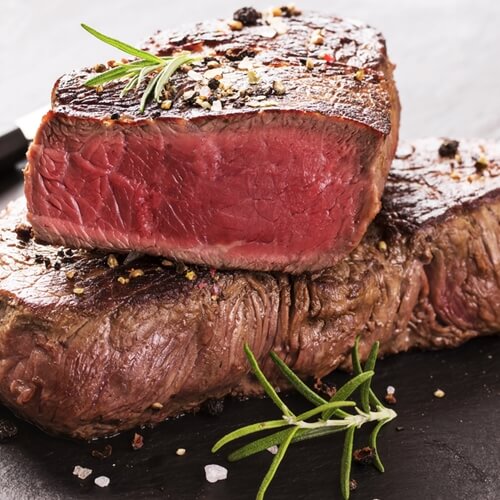4 Sous-Vide Recipe Ideas
Over the past few years, sous-vide has taken off as a cooking method used in many professional kitchens and, increasingly, in homes as well. Well-known chefs like Grant Achatz of Alinea and Thomas Keller of The French Laundry made this way of preparing food that relies on a vacuum-sealed bag and a water bath with a built-in thermostat a regular feature of their cooking. If you are attending culinary academy, you’ll benefit from mastering techniques that guarantee the perfect temperature and unparalleled tenderness. Here are a few recipes to get you started:
1. Achieve the ideal steak
There’s no pickier eater than the steak connoisseur, but sous-vide will silence all criticisms. The Kitchn gave directions for how this approach can ensure beef perfection, beginning by coating a rib eye with a dry rub of rosemary, pepper and ground, dried porcini mushrooms.
After sealing steak into the bag with a splash of olive oil, place it in the bath. Keep in mind that the temperature depends on your desired level of doneness: for medium rare, you want the steak to reach an internal temperature of 129 degrees Fahrenheit while you’ll push it up to 135 degrees for medium. Leave the bag immersed for one to four hours. Then, give the steak a quick sear on your stovetop for improved texture and taste.
2. Step up your chicken
The technique also works great for chicken breasts and thighs. Chef Michael Voltaggio provided Williams-Sonoma with his method for preparing crispy thighs, which requires heating the water to 150 degrees. Season the thighs with salt and pepper, and include thyme, garlic and butter in the bag. Cook for about an hour and a half, and then cool the chicken in the refrigerator. Pat off the chicken and cook it in a fry pan with canola oil for eight to 10 minutes. Flip and cook for another two minutes.
3. Make slow-cooking pork easier
Sous-vide is mostly associated with slowing down foods that normally cook quickly like chicken and steak. However, according to Serious Eats, the method can also simplify the preparation for an item like pork shoulder while contributing distinctive textures. Give the meat a rub of paprika, salt, brown sugar, black pepper, mustard seed, oregano, garlic powder, red pepper flakes and coriander seeds before sealing the bag.
Cook the pork at 165 degrees for up to a full day. Complete the job in an oven set to 300 degrees, roasting the shoulder for about an hour and a half. Then, pull the meat apart, add salt and serve with barbecue sauce.
Steamy Kitchen pointed out that sous-vide works for pork belly as well. This recipe calls for placing the meat in a bag with a sauce made from ginger, garlic, green onion, orange peel, honey and soy sauce. Cooking takes about 16 hours at 158 degrees.
4. Get salmon just right
You can also bring your slow cooking tools to seafood with excellent results. The New York Times offered instructions for salmon that start with roasting hazelnuts and toasting and grinding coriander seeds. Combine the nuts and seeds with ginger, salt and chamomile. At first, however, just season the salmon fillet with salt and pepper and seal it into a bag.
Heat the salmon at 115 degrees for 25 minutes. Then, take the fish out and remove the skin. Melt butter in a skillet over medium-low heat and mix in the seasoning before searing the salmon. After cooking on each side for about 30 seconds, the fillet is ready to serve.
These recipes will get you started on sous-vide cooking. With your training in online cooking courses, you’ll soon be developing a variety of great ideas that take advantage of the precise control this method allows.


